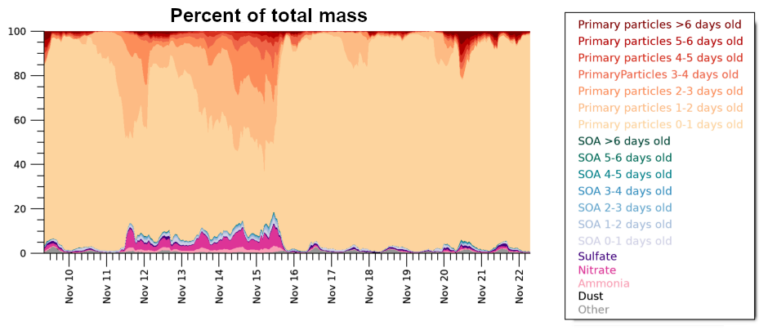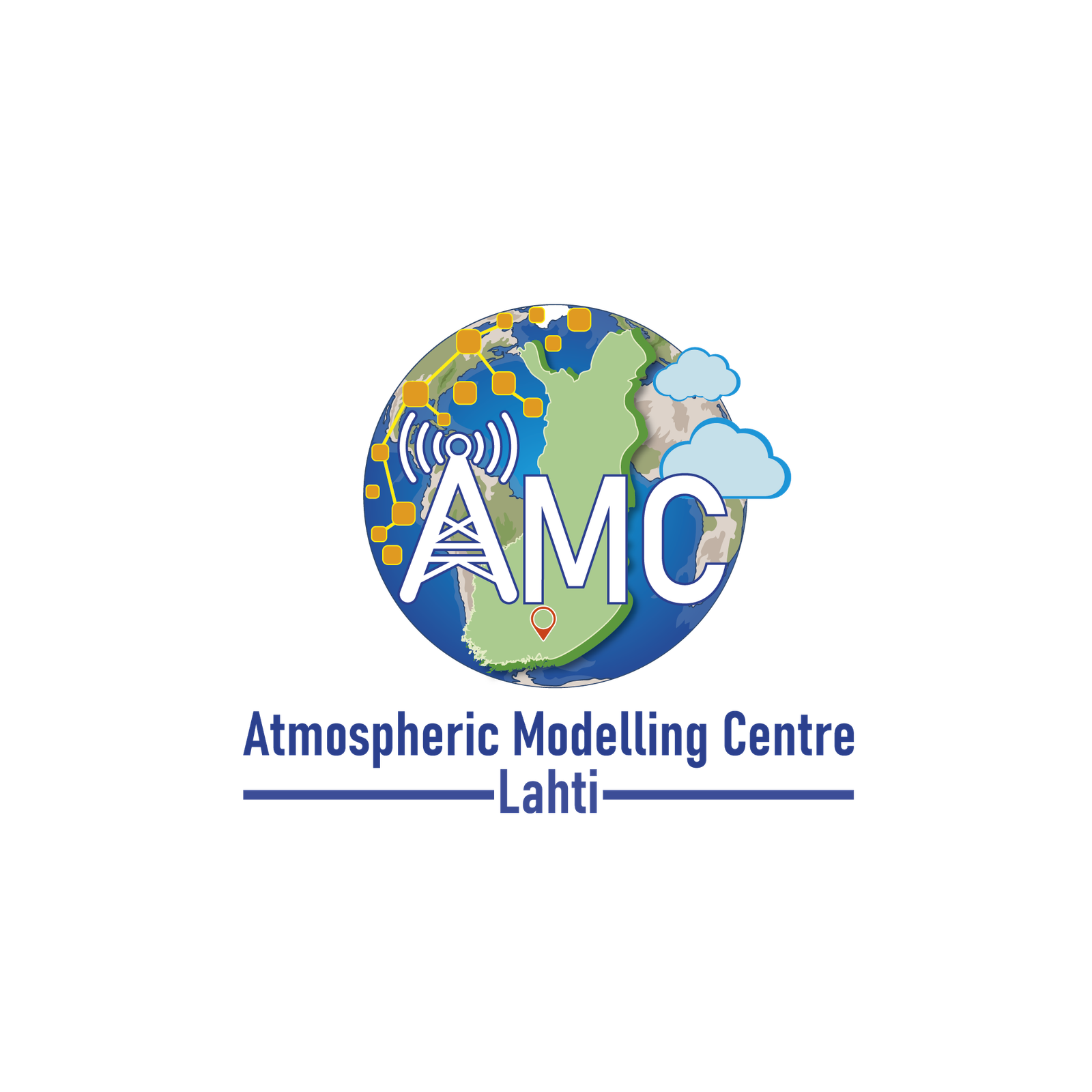- contact@amc-lahti.fi
Air quality research
Air quality studies, from Lahti to megacities
AMC-Lahti is studying air quality in small and large cities from a modelling perspective. Ongoing studies investigate severe wintertime haze episodes in China, sources of atmospheric particles in Lagos, Nigeria, transport of regional air pollution into Istanbul, Turkey, and effects of Green City planning in Lahti, Finland. The group’s research focuses on understanding atmospheric chemistry, particularly the autoxidation of volatile organic compounds (VOCs), as well as the formation and growth of atmospheric particles with a focus on their chemical composition. A key area of study is the role of secondary organic aerosols (SOA) in urban environments. These studies are done primarily with the FLEXPART-SOSAA modelling system, and the work also incorporates the ARCA-box and Enviro-HIRLAM models. The group collaborates with national and international universities and institutes to advance model development and application, providing crucial insights for air quality management.
Air quality in China
Over the past few decades, China has experienced a rapid growth in urban development, transportation, manufacturing, industry, energy pro-duction, and natural resource extraction. While rapid economic growth has many positives, is also comes with societal challenges, and one of the greatest ongoing challenges is air quality. China’s “chocking cocktail” has resulted in an estimated 2.5 million deaths per year caused by air pollution. Severe haze episodes, especially during winter, have a negative impact on health, wellbeing, and the economy. Additionally, widespread regional haze events have impacts on solar radiation and thus the climate system. AMC Lahti is actively working to study the air quality and climate impacts of large-scale haze episodes in China.
Sources and causes of a wintertime haze episodes
During the autumn and winter of 2018, northern China experienced a series of severe haze episodes, which were reported in international media. AMC-Lahti has been studying this time period as a test case for using the SOSAA model for air quality analysis. We focused in particular at a measurement station at the Beijing University of Chemical Technology (BUCT) which has been built in cooperation with the University of Helsinki. BUCT measurements have been used to evaluate the SOSAA model.
We started with the FLEXPART (Flexible Particle Dispersion Model; flexpart.eu) to look at where pollution sources arriving in Beijing were sourced. This gives us an idea on emission sources and regions that contributed to the haze.

Then we applied SOSAA (the model to Simulate the concentration of Organic vapors, Sulfuric Acid, and Aerosols, developed at the University of Helsinki), which was used to analyse the age, chemical composition, physical characteristics, and lifecycle of the haze. This gives us insight on the causes of haze episodes.

We also looked at some reduced-emission scenarios that could potentially be used to learn how haze could be mitigated in the future.

Seasonal air quality throughout the Gigacity region
The “Gigacity” region of China, extending from Beijing to Shanghai (which includes the North China Plain and lower Yangtze River region) is home to around 600 million people. This is around 40% of China’s population and 7% of the whole world’s population. The region often suffers from air quality problems, especially in the autumn and winter. At AMC-Lahti, we are studying seasonal characteristics of air quality in the gigacity region.
Machine learning analysis of Chinese air quality sensors
In 2013, China’s Ministry of Environmental Protection (MEP) began to install a network of air quality monitoring stations. There are currently over 2000 stations across China, each reporting hourly measurements of 6 different atmospheric pollutants. This means that there are over 105 million data points collected by this air quality network each year. We are applying machine learning and neural networks to this big dataset to analyse trends and characteristics of different pollutants and stations throughout China. Results will give further insights into the air quality situation in China.

Dust and air pollution sources in Lagos, Nigeria
Lagos is the second most populated city in Africa and one of the fastest growing megacities in the world. The city experiences air quality problems throughout the year, and according to the World Bank, thousands of premature deaths per year are attributed to air pollution. Using the SOSAA model, we are investigating pollution sources in Lagos, including energy, transportation, and waste burning. We are also using FLEXPART and SOSAA to trace dust in Lagos that is transported from the Sahara and Sahel regions.

Tracking variations in air pollution in Istanbul, Türkiye
Istanbul is a megacity with over 15 million residents spanning Eurasia. Our group is working on studying local and regional sources of air pollution observed in the city using the FLEXPART-SOSAA modelling system. We are investigating weather patterns that lead to high concentrations of air pollutants as well as seasonal variations of air pollution.
Autoxidation of aromatics in air quality modelling
In megacities, especially in China, aromatics from industry and traffic play a significant role in atmospheric chemistry that leads to subsequent aerosol formation contributing to haze. Autoxidation of aromatics is currently being studied in laboratory environments, and at AMC-Lahti we are working on developing code for the chemical mechanisms of aromatic autoxidation to be used in SOSAA and potentially other air quality models.
We have found that autoxidation of aromatics plays a crucial role in accurately modelling air quality in megacities, especially Beijing.

We have developed SOSAA with the new chemical mechanism for three significant aromatics: benzene, toluene, and xylene, and the model has been tested during a two week haze period in Beijing. Results show that there is an improvement to the model, notably during particle formation events. Adding autoxidation of these three aromatics significantly improved the growth rates of particles, leading to more realistic simulations.
Currently, we are working on developing chemical mechanisms for additional aromatics, and we will test them in the model for a greater area and longer time scale.
How does green city planning in midsized cities affect air quality?
While air quality research often focuses on large cities, midsized cities are also important. Lahti and other similar sized cities across Europe are developing plans to become green cities, for example making zero emissions goals. At AMC-Lahti, we are studying how these types of plans impact local and regional air quality. This involves working with local governments to understand their plans for removing emissions (both climate related pollutants such as CO2 as well as primary emissions and VOCs that are precursors to atmospheric aerosol pollution), and we are using SOSAA to model the impact of the proposed plans.
Contact Us
contact@amc-lahti.fi
Location
LAHDEN YLIOPISTOKAMPUS Niemen kampus Niemenkatu 73 (B-osa) 15140 Lahti

